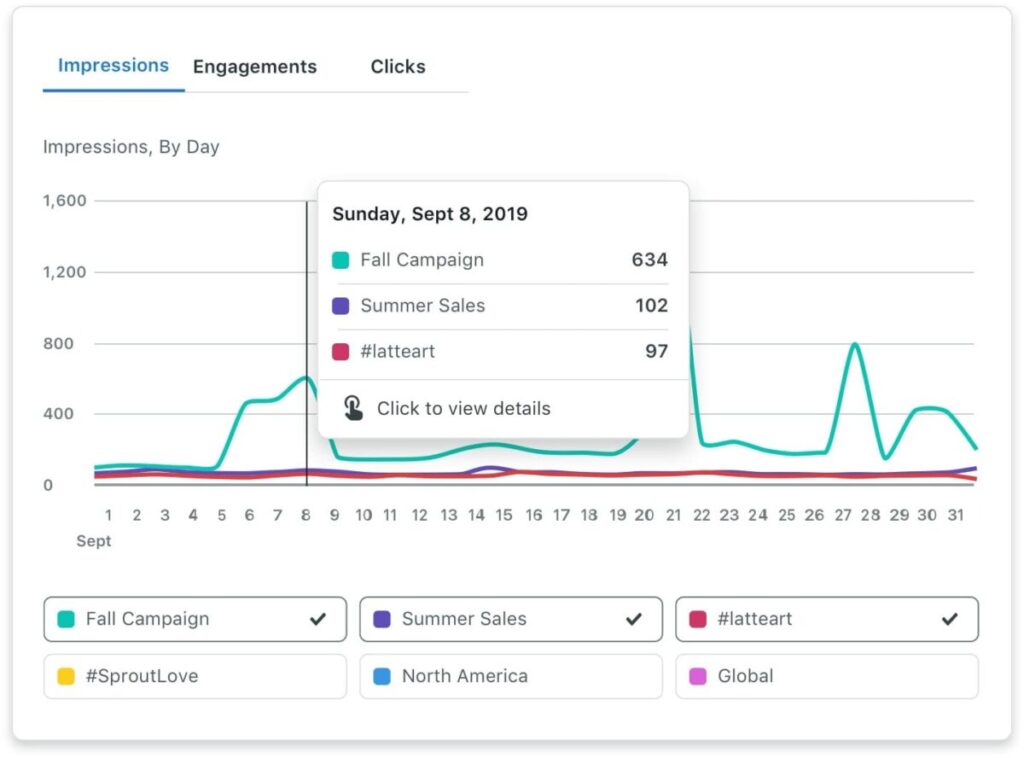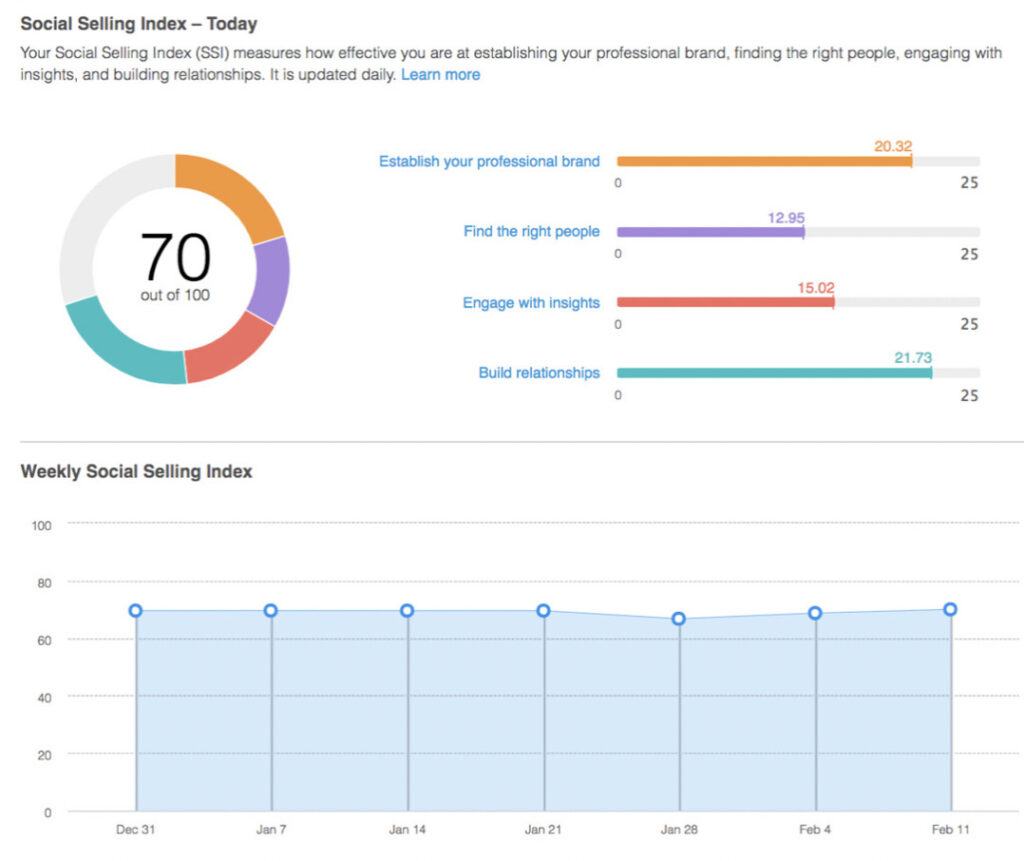Meta Description: Wondering how your social selling efforts are paying off? Keep track of these nine top social selling metrics to see how your brand is performing.
You’ve put in a lot of work to promote your products via social media and drive sales through those platforms. This may include everything from sharing relevant lead generation forms to adding product tags in your posts. But how do you know if those efforts are paying off? It’s important for brands to keep a close eye on their social selling metrics to ensure that their efforts are yielding results.
So what exactly are these social selling metrics and how do you know which ones are important for your brand? In this post, we find out the top social selling metrics that brands need to measure to understand their performance. Let’s get started.
9 Important Social Selling Metrics to Measure for Brands:
What are Social Selling Metrics?
Social selling metrics, as the name suggests, refer to key performance indicators that are used for measuring the success of your social selling efforts. They can give you an idea of how engaged your prospects are or how effectively you’ve generated leads from social media. Sometimes, they may even specifically measure purchases that directly came from those platforms.
Why You Need to Measure Social Selling Metrics
Measuring your social selling metrics is a crucial part of building an effective social selling strategy. It gives you an overview of whether your social media investment is turning into measurable results and contributing to your bottom line. A closer look at each of those metrics also shows you what parts of your strategy need improvement and what parts are paying off. This will allow you to fine-tune your strategy so that it yields even more impressive results for your business.
9 Top Social Selling Metrics to Measure
Now that you have a better idea of why you should be measuring your social selling metrics, it’s time to look at the metrics that matter. Here are nine of the top social selling metrics that brands should use to measure their performance.
1. Content Engagement Rate
Sharing valuable content is an important social selling strategy. While B2C brands may share content directly showcasing products they want to promote, B2B brands may be using social media to share thought leadership pieces and insightful content. For instance, Salesforce shared the following tips on how to create better data charts, which is highly valuable for their audience and would likely drive tons of engagement.
As such, measuring how people are engaging with your content is a good indicator of how well your content is resonating with them. This can then help you understand the effectiveness of your social selling efforts. A good content engagement rate shows you that people are getting value out of your content, and they might want to stick around and eventually become paying customers.
2. Click-Through Rate
Your content engagement rate only scratches the surface on how your social selling efforts are paying off. Sure, people may be engaging with your content, but are they taking any further actions? Your click-through rate is a great way to tell whether people are clicking on the links that you’ve shared on social media. This gives you an idea that your audience is interested in learning more and possibly even converting into paying customers.
In other words, your click-through rate helps you understand whether your social media content is leading people closer to a purchase. To track this social selling metric more accurately, make sure to check the click-through for each unique link that you’ve shared. This will make it easier to narrow down which posts were the most effective at driving clicks. You’ll then be able to learn from this and replicate the success for a more impactful social selling strategy.
You can use social media analytics tools to keep track of different engagement metrics including link clicks. Tools such as Sprout Social even let you assign a tag to different campaigns so you can see how each campaign is performing in terms of engagement rate and click-throughs.

Source: sproutsocial.com
3. Website Traffic
While some social media platforms now give consumers the option to make purchases directly within the platform, most conversions still have to take place through the brand’s website. That means for people to buy what you’re selling, they have to first visit your website. This makes it crucial to keep track of your website traffic so you can understand how many people came to your site to take further action.
More specifically, you should be looking at the traffic coming from organic social. You can use your Google Analytics data to keep track of this vital social selling metric. It will show up in your traffic acquisition report along with data about traffic from a variety of other sources. You can go a little deeper and look at the number of sessions, engaged sessions, and average engagement time to understand the quality of traffic coming from social media.

Source: analytics.google.com
4. Message Response Rate
For some social media platforms, especially ones such as LinkedIn, social selling conversations often take place privately. This means you may have your sales teams and customer service reps discussing your products and services with prospective customers via direct messages.
Sometimes, these conversations may begin from a customer query, where someone messages you with a question and you provide them with an appropriate response and continue to nurture them. Sometimes, the conversions may even begin through cold outreach where you send LinkedIn ad messages to people who fit the type of audience you want to reach.
Either way, keeping a close eye on how people are responding to your messages can tell you how engaged they are and how invested they must be in the conversation. Especially in the case of cold outreach messages, it gives you an idea of how relevant your targeting was and whether they might be interested in your offering. As such, you need to closely monitor your message response rate to understand the impact of your social selling efforts.
On LinkedIn, you can access your response rate through your InMail Analytics Report. Besides each message variation, it will give you a comparison of the number of messages you sent out and the number of responses you received. It will then summarize your performance in the form of a response rate, which will tell you which of your message variations were the most impactful.

5. Customer Acquisition Cost
It’s not enough to simply look at the results of your social selling efforts. You also have to consider how you achieved those results so you can get a comprehensive understanding of your performance. Sure, you may be getting tons of clicks on your social media ads, but how much are you spending to display those ads? Unless you get an idea of the associated costs, you can’t get an accurate idea of how your social selling strategy is paying off.
This makes it crucial to track social selling metrics related to cost, which would mostly be your customer acquisition cost. You can measure your customer acquisition cost by dividing your social selling expenses with the number of new customers you acquired. Some analytics platforms will even do this for you automatically when measuring the results of your paid social efforts.
For instance, Sprout Social offers a comprehensive paid performance report that breaks down the cost and impact of your social media ad campaigns. It keeps track of your total spending and compares them against different paid performance metrics. Based on this, you’ll be able to measure your cost per impression, cost per click, cost per engagement, and cost per conversion.

Source: sproutsocial.com
6. LinkedIn Social Selling Index
If you’re selling to a B2B audience and you’re using LinkedIn as a key social platform, the LinkedIn Social Selling Index (SSI) is a vital metric to measure. It’s an index that scores your business on a scale of 0-100 based on how effective you are at the following vital areas:
- Establishing your professional brand
- Finding the right people
- Engaging with insights
- Building relationships
The platform essentially takes into consideration how well you’ve managed to leverage LinkedIn to build your brand and establish your presence. It looks at how effectively you’ve built and nurtured your connections, which is an essential step to social selling. According to LinkedIn, leaders in social selling have been able to generate 45% more opportunities than those with a lower SSI score.
LinkedIn will update this score on a daily basis and give you a comparison of how your SSI score has changed in the past weeks. Keep track of these changes to understand whether any new campaigns or social selling efforts made any impact. You’ll then be able to use this information to make improvements to your existing strategy and replicate success.

Source: linkedin.com
7. Number of Leads Generated
Another important social selling metric to track is the number of leads you generated. These would be individuals who have showed some interest in your product offering but aren’t quite ready to make a purchase. So you’d be looking at the number of demos downloaded, webinar signups completed, forms submitted, and so on. Ideally, you should be tracking this on a post-by-post or campaign-by-campaign basis to get a better sense of how specific posts or campaigns are yielding leads.
This social selling metric is particularly useful to track for campaigns that involve lead magnets. For example, you may be offering a free report or ebook in exchange for personal information such as email address and occupational details. In this case, you’d want to keep track of the number of people who submitted the form so they could complete their download. Alternatively, leads may be in the form of people who signed up for your newsletter, registered for your webinar, or even commented on your post asking about your rates.
8. Conversion Rate
One of the most vital social selling metrics, of course, is your social media conversion rate. How effectively are you converting people through your social selling efforts? You’d essentially be keeping track of the number of people who turned into paying customers as a result of social selling. This may include people who came from your organic social media posts and eventually converted as well as those who clicked on your paid social media ad and directly made a purchase.
To track your conversion rate, start by defining the conversion action. Just as with lead generation, your conversion action may be anything from signing up for your webinar to making an actual purchase. You’ll then need to measure the number of conversion actions that took place against the number of visitors coming from social media. Most of the time, you can get data on these conversion actions within the platform’s native analytics reports.
9. Number of Referrals
Word-of-mouth is still one of the most powerful ways to attract new customers for your brand. Referrals are particularly valuable for businesses in the B2B landscape as it gives you more credibility and helps you earn that initial trust with your target audience. In fact, even just mentioning a mutual connection when talking to a prospect for the first time can give you a 70% increased likelihood of getting an appointment.
This is why the number of referrals you’re getting is an essential metric to consider when measuring the impact of your social selling efforts. Many social selling tools may come with the capability to check this number for you. You could also conduct a separate survey asking prospects how they heard about your business so you can keep track of how many referrals you got from existing customers.
Ready to Amplify Your Social Selling Impact?
Knowing exactly which social selling metrics to track will help you understand how your current efforts are paying off and what improvements you need to make. This will then inform your decisions and help you fine-tune your social selling strategy to generate an even bigger impact. Make the most of the metrics we highlighted above to accurately assess your performance.


